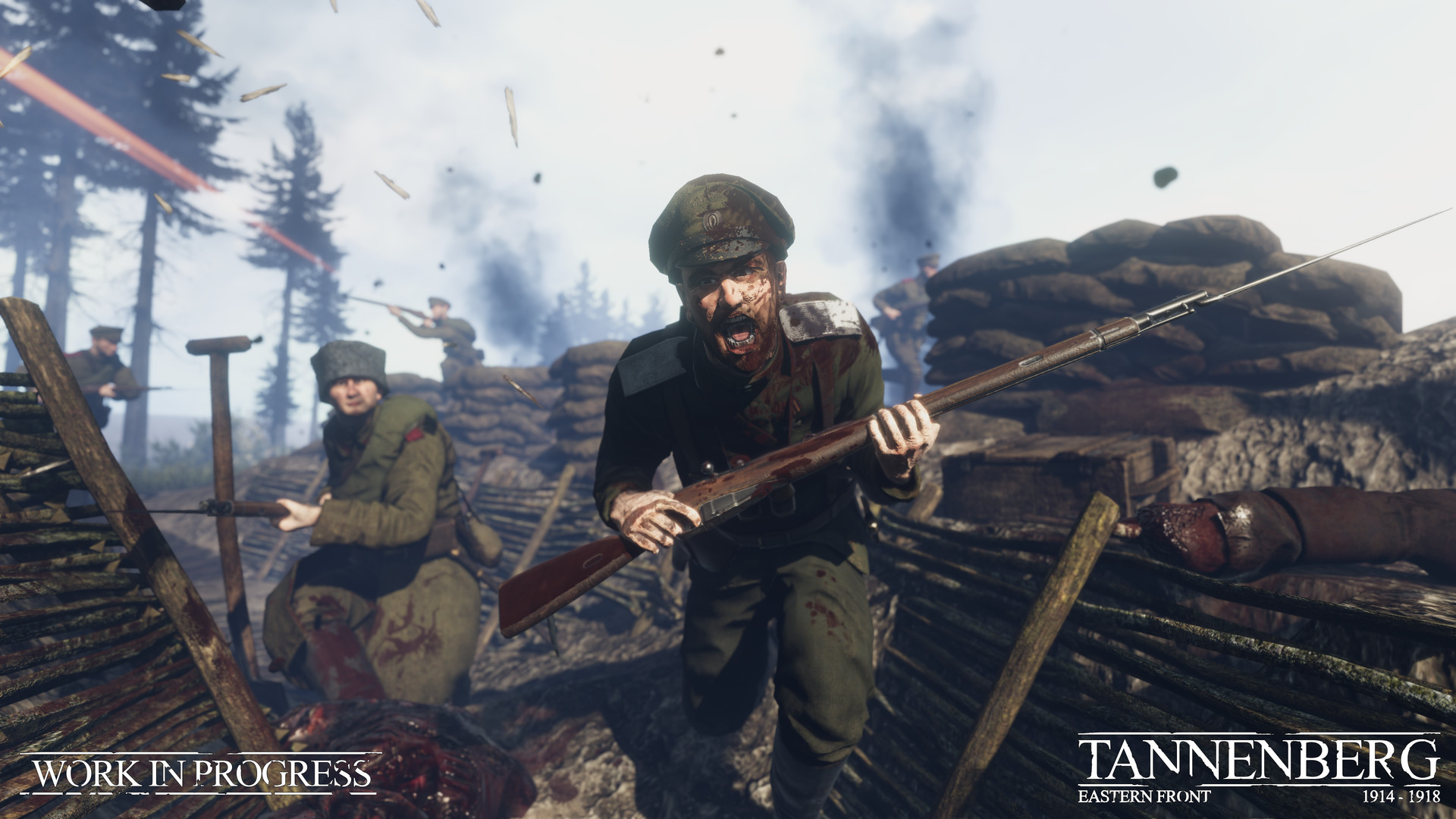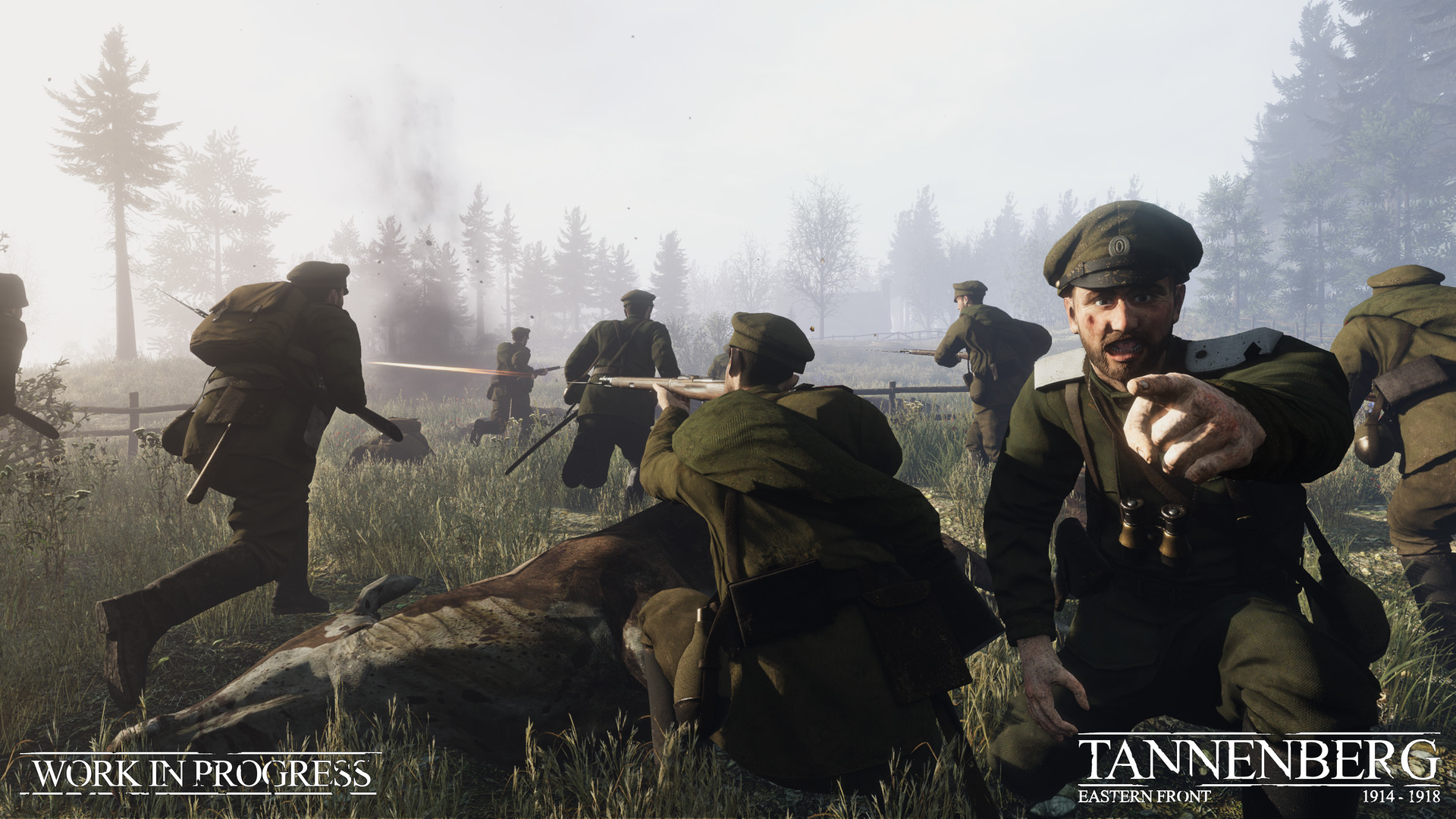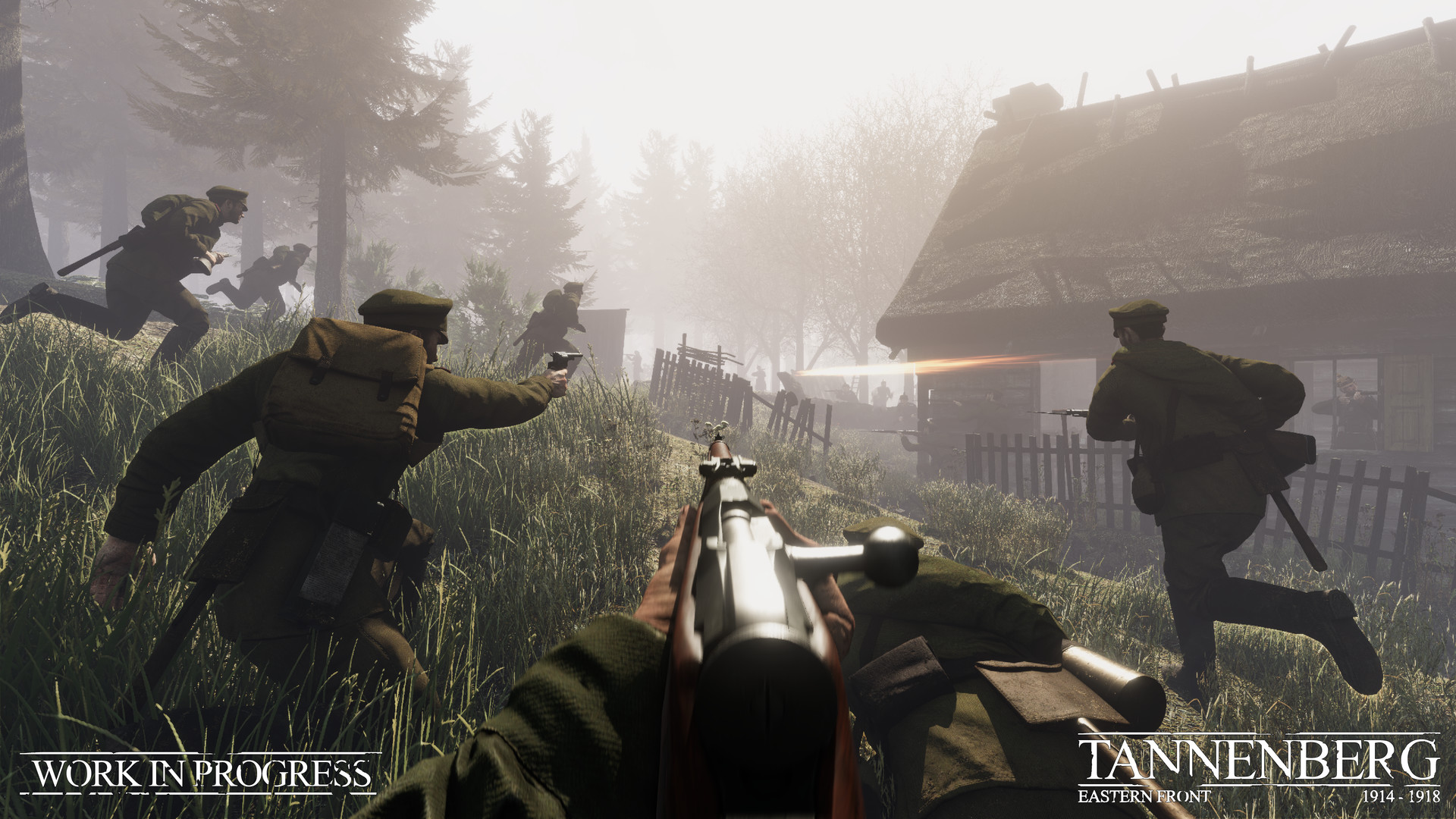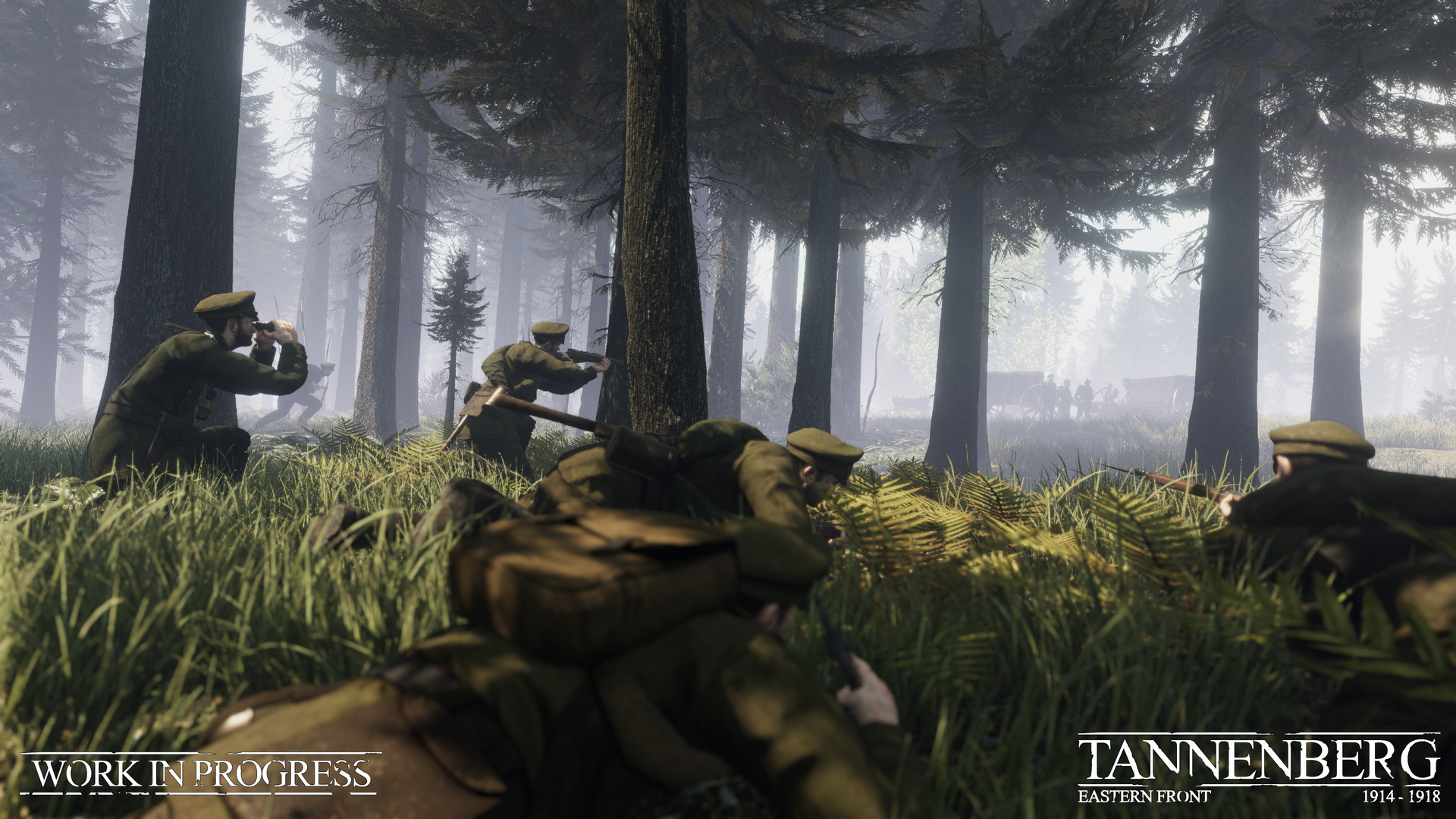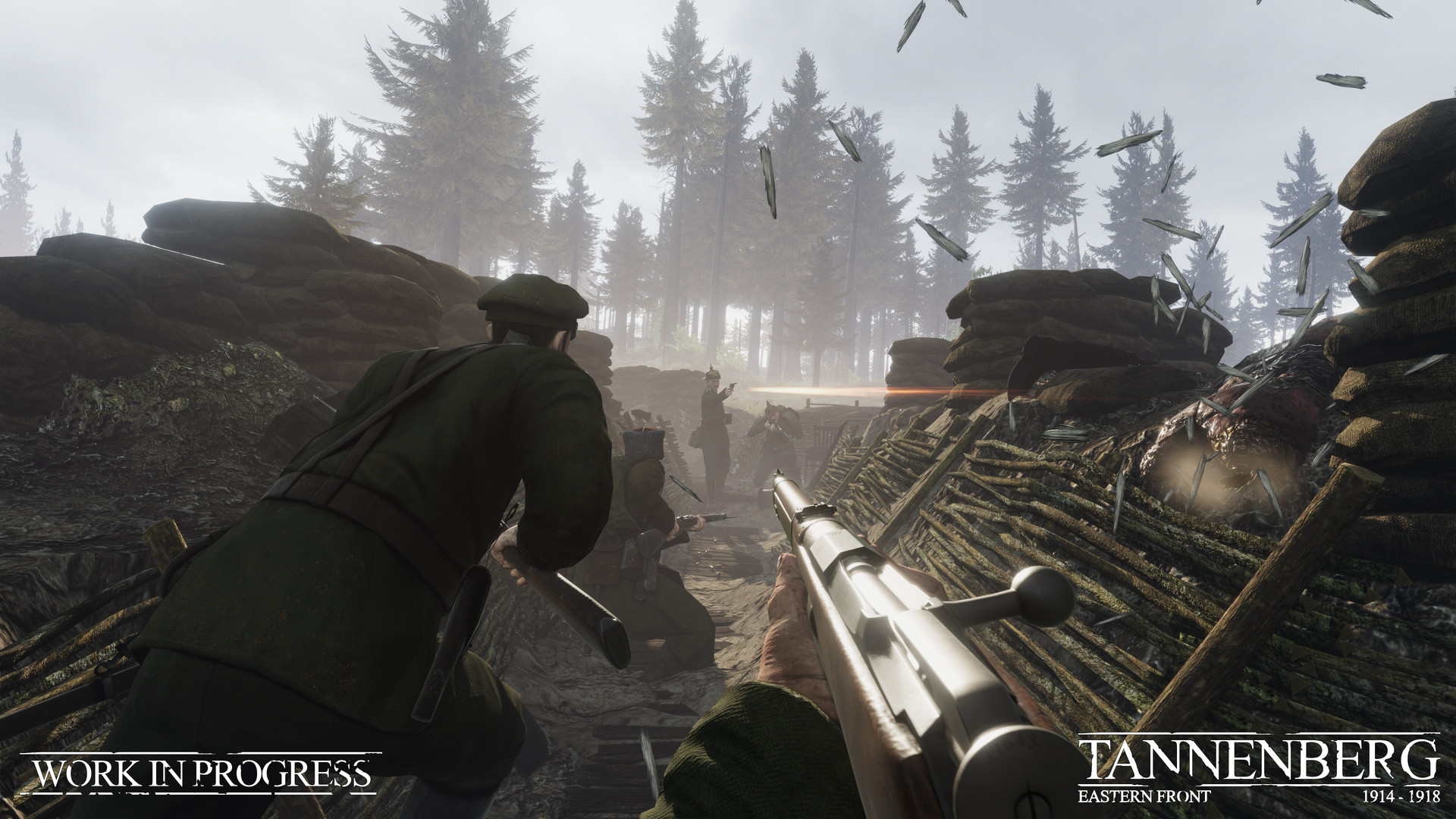This historical game takes place across the lakes, forests, and snowy plains of the Eastern Front - it was inspired by the Battle of Tannenberg in 1914 where the Russian Second Army was dealt a heavy blow by the Germans. Tannenberg offers a range of game modes - including the exciting new mode reflecting the different nature of war on the Eastern Front - and a wealth of historical detail: realistic WW1 weaponry, authentic uniforms, horrendous gore, and maps based on real battlefields, this time in the forests, plains and mountains along the border between the Russian Empire and the Central Powers.
Tannenberg key features include:
- Realistic World War 1 gameplay
- Tactical squad-based FPS
- Warfare on the Eastern Front
- Majestic backdrops and map detail
- Variety of game modes for player counts of up to 64
It’s all-out war on the Eastern Front! From artillery barrages and poison gas to the deadly machinegun and humble rifle, there are many weapons to master. The battlefield is a dangerous place, and a little thought will help you stay alive – lead your shots, keep your eyes open, and be ready to engage in ferocious close combat at any moment.
Authentic Eastern Front Warfare
The development team is aiming to recreate the atmosphere of the Eastern Front with the same level of accuracy as in Verdun. Uniforms have been recreated to the tiniest detail, the weapons are modeled to exact references and the maps use realistic props and terrain layouts.
Follow us on Twitter and Facebook, or contact us via Discord.
Following the initial military disaster of the Battle of Tannenberg in 1914, the Russian Army had been doing better, particularly against the Austro-Hungarians. A Russian counter-attack routed their opponents in the south and allowed them to besiege the fortress city of Przemyl. The Germans launched a number of attacks to try and distract the Russians, but despite some minor successes they were unable to deal serious damage.

Central Powers troops on the march.
This would change in May 1915. A combined German and Austro-Hungarian force was assembled with more than 700 artillery pieces, including 159 heavy guns and 96 mortars such as the 305 mm Skoda siege howitzers. They were attacking Russian defenders with only 145 artillery pieces, of which a mere 4 were heavy guns. It did not go well for the outgunned Russians, and what was intended as a distraction quickly became a huge offensive, with the Russians unable to organize a meaningful resistance. What counter-attacks there were only added to the Allied losses. The offensive would continue until June 22, and triggered the Russian withdrawal known as the Great Retreat.

Austro-Hungarian 305 mm heavy mortars the Central Powers advantage in artillery numbers gave them a significant advantage. Image from Imperial War Museum.
Two days of campaigning remain
In the current campaign, the balance of casualties currently stands at 794,025 vs 772,397 in favour of the Entente. Once again the Central Powers are on the back foot... but the West to East 1915 campaign will continue until this Friday 4th.Isonzo Intel
In case you missed the latest Isonzo Intel, it was all about the challenges of recreating historical landscapes in a videogame. Aside from the technical side of things, you first have to find good reference materials, and remember that landscapes can change a lot over the years...https://steamcommunity.com/games/1556790/announcements/detail/3041597566481848340
Until next time!
Minimum Setup
- OS: Ubuntu 18.04+ 64bit only. Other distros will probably work. but are not officially supported.
- Processor: Intel CPU Core i5-2500K 3.3GHz. AMD CPU Phenom II X4 940Memory: 4 GB RAM
- Memory: 4 GB RAM
- Graphics: Geforce GTX 960M / Radeon HD 7750 or higher. 2GB video card memoryNetwork: Broadband Internet connection
- Storage: 8 GB available spaceAdditional Notes: Multiplayer only. make sure you have a stable and fast internet connection.
Recommended Setup
- Graphics: 4GB video card memoryNetwork: Broadband Internet connection
[ 6487 ]
[ 2143 ]
[ 1910 ]

